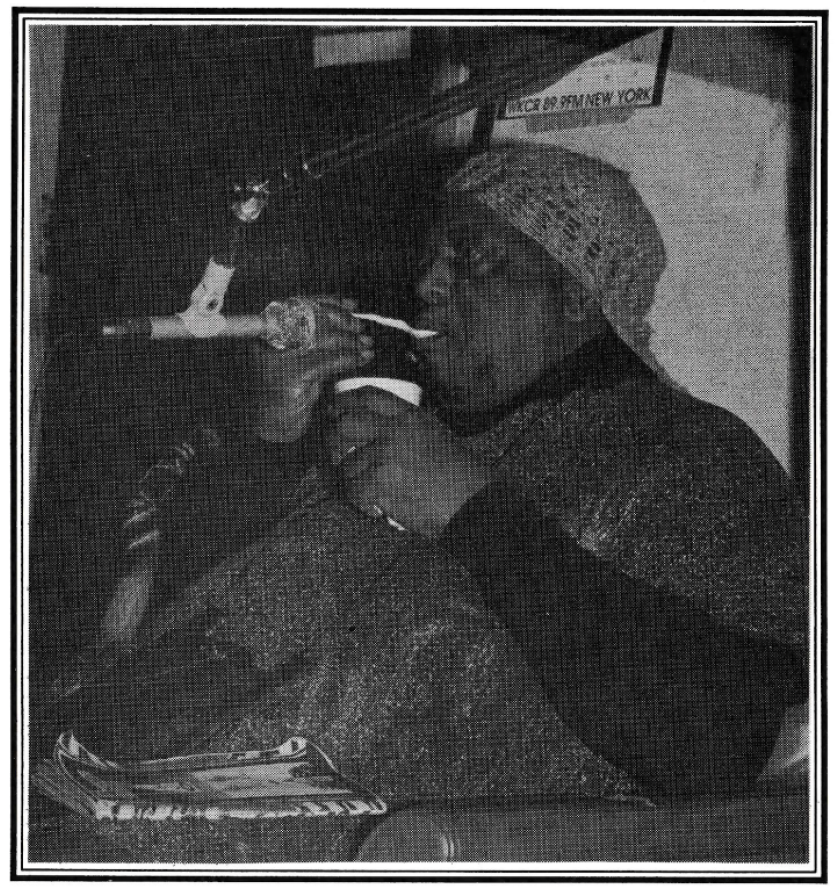
Sunday, October 8, 2017 - 2:00pm to 7:00pm
Sid Gribetz presents a five-hour retrospective radio broadcast celebrating the career of saxophonist Wardell Gray this Sunday, October 8, 2017, from 2-7 PM, on Jazz Profiles on WKCR radio.
Wardell Gray is a “forgotten tenor”, one of the lost masters of modern jazz. Many critics aptly classify his style with a moniker of “Easy Swing”, a felicitous facility that imparts a rhythmic grace yet intensive communicative attack that conveys a soulful message.
Wardell Gray is a “forgotten tenor”, one of the lost masters of modern jazz. Many critics aptly classify his style with a moniker of “Easy Swing”, a felicitous facility that imparts a rhythmic grace yet intensive communicative attack that conveys a soulful message.
Born in Oklahoma in 1921, his family moved to Detroit as part of the “Great Migration’. Gray was raised and came of age in the then-vital Motor City jazz scene and learned great lessons in his formative years at the legendary Cass Tech. Gray attracted the attention of Earl Hines, who hired him to be the featured soloist in his big band from 1943-1946.
Wardell left Hines to settle in Los Angeles, where he became a pivotal figure in the excitement of post-war California jazz, often featured in musical battles with his friend Dexter Gordon, in the raucous jam session development of west coast bebop when Bird was in the air. Gray’s records with Dexter, “The Chase” and later “The Hunt”, and others, were big sellers and epitomized this excitement, fueling the drives of Jack Kerouac On The Road.
Wardell left Hines to settle in Los Angeles, where he became a pivotal figure in the excitement of post-war California jazz, often featured in musical battles with his friend Dexter Gordon, in the raucous jam session development of west coast bebop when Bird was in the air. Gray’s records with Dexter, “The Chase” and later “The Hunt”, and others, were big sellers and epitomized this excitement, fueling the drives of Jack Kerouac On The Road.
By the end of the decade, Gray’s reputation led to his engagement in the bands of Benny Goodman and Count Basie, but perhaps the timing was off – he was with Goodman when Benny attempted to make his band bop-influenced, and Gray’s major accomplishments with Basie were in the brief period when the Count was forced to down-size his big band to an octet. In the late 1940's, Gray also appeared on seminal recordings with Charlie Parker, Fats Navarro, and Tadd Dameron.
Later, Wardell made a few small group recordings for Prestige Records, most notably his composition “Twisted” and Art Farmer’s “Farmer’s Market”, to which Annie Ross wrote hip lyrics and remain a big part of the repertory to this day.
In the 1950's Wardell drifted away from major popular attention, but he remained active and was poised for a comeback when Benny Carter hired him to participate in a new band which would integrate the Las Vegas casino entertainment. However, on opening night in July 1955, Gray was killed at the age of 34, and his body found in the Nevada desert, under mysterious circumstances subject to various innuendos and yet to be solved.
Later, Wardell made a few small group recordings for Prestige Records, most notably his composition “Twisted” and Art Farmer’s “Farmer’s Market”, to which Annie Ross wrote hip lyrics and remain a big part of the repertory to this day.
In the 1950's Wardell drifted away from major popular attention, but he remained active and was poised for a comeback when Benny Carter hired him to participate in a new band which would integrate the Las Vegas casino entertainment. However, on opening night in July 1955, Gray was killed at the age of 34, and his body found in the Nevada desert, under mysterious circumstances subject to various innuendos and yet to be solved.
